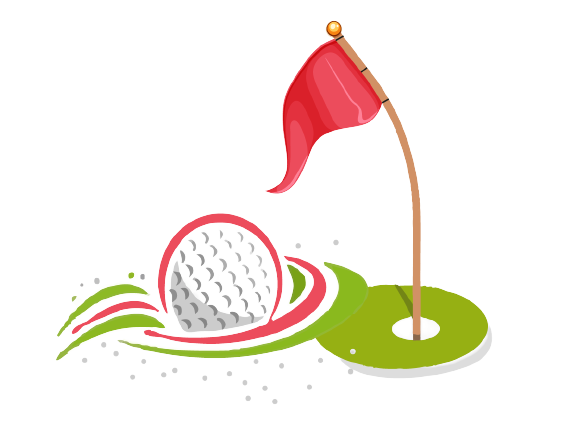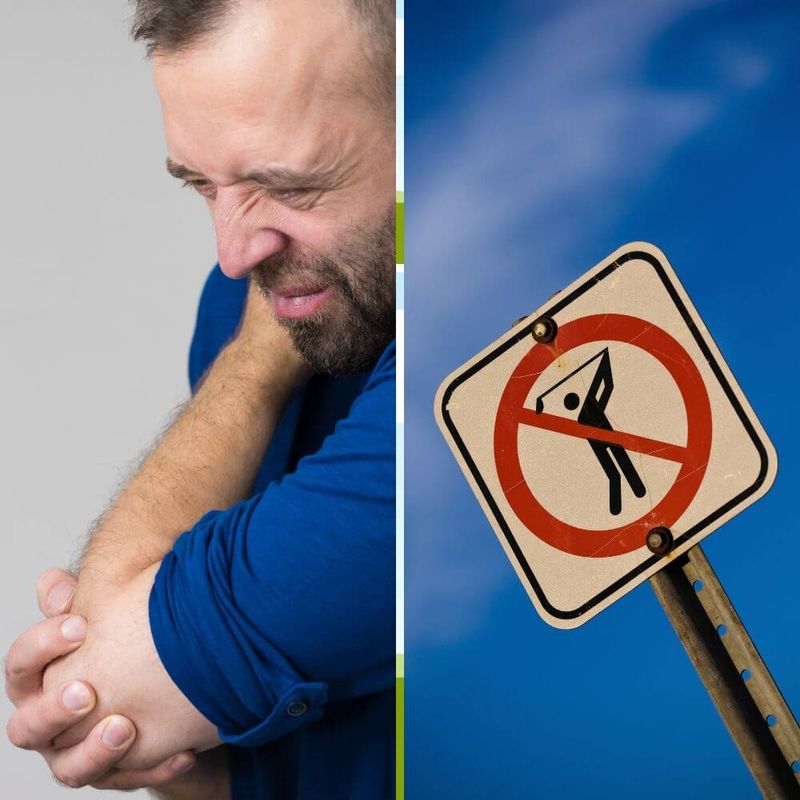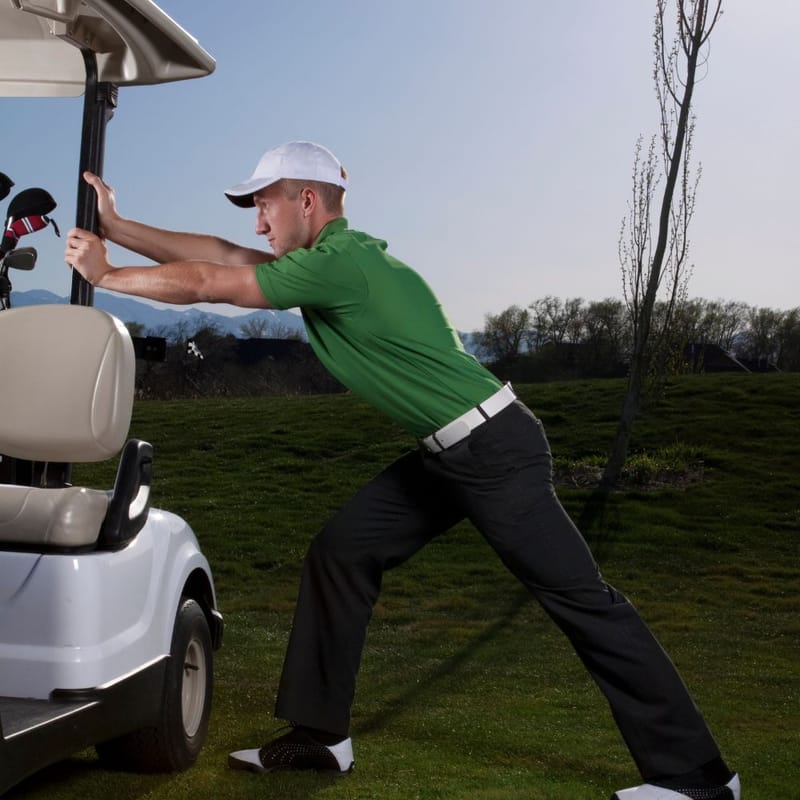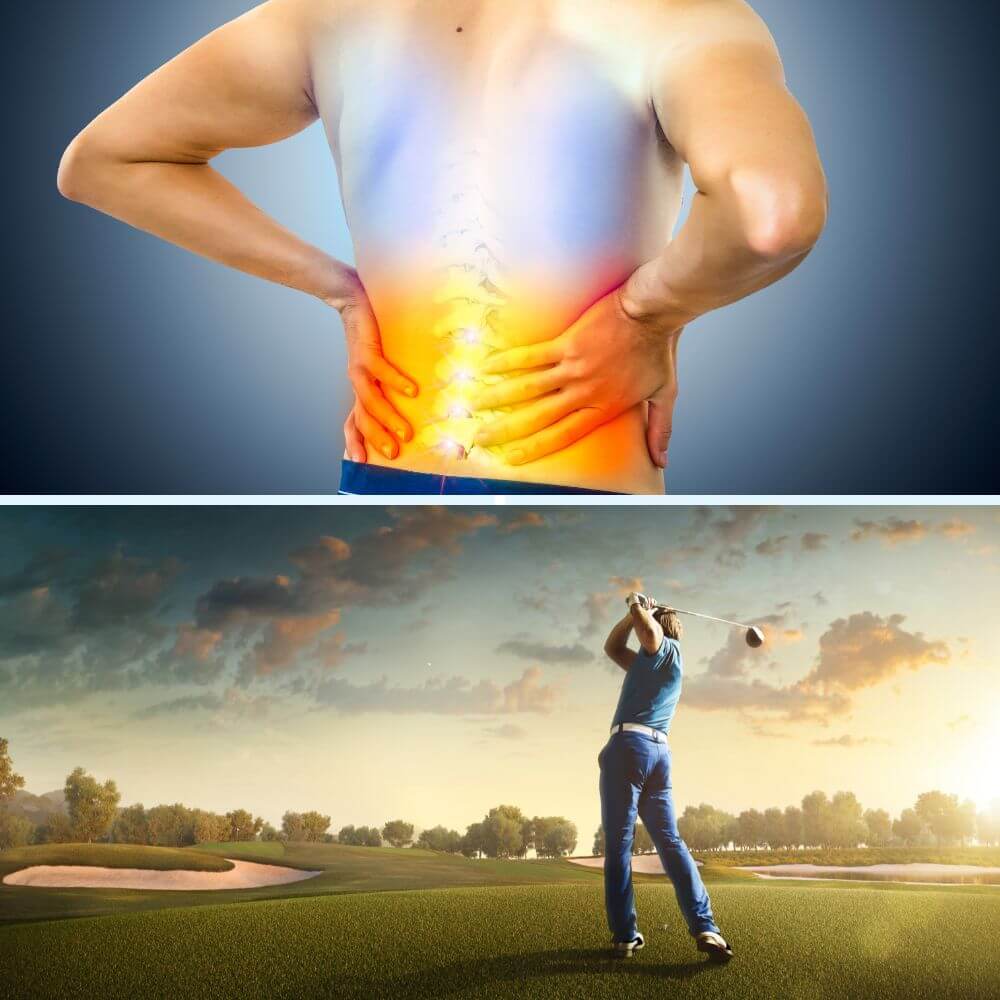Content Summary
Although it seems like every golfer you run into has a golfer's elbow, less than 1% of the population is actually affected by the injury.
Golf elbow, or medial epicondylitis, is a common injury for golfers caused by overuse of the muscles and tendons in the forearm and elbow. Understanding the causes, symptoms, and treatment options for golf elbow is key to how to treat golf elbow pain. If you don't do anything to heal the injury your golfing days may be over.
What is a Golf Elbow?
Golf elbow is characterized by pain and inflammation inside the elbow. It is often caused by repetitive wrist flexion and forearm rotation, as required in the golf swing. Overuse leads to microtears and inflammation of the tendons that attach to the bony bump on the inside of the elbow (medial epicondyle).
How to Treat Golfers Elbow
Causes and Symptoms of Golf Elbow
Repeated stress to the wrist flexor tendons causes tiny tears and damage, resulting in pain and tenderness. Common symptoms include:
What pain does golfer's elbow create?
- Pain on the inside of the elbow
- Stiffness and throbbing discomfort
- Golf forearm pain
- Weakened grip strength
- Pain when making a fist or grasping objects
- Pain when shaking hands or picking up items
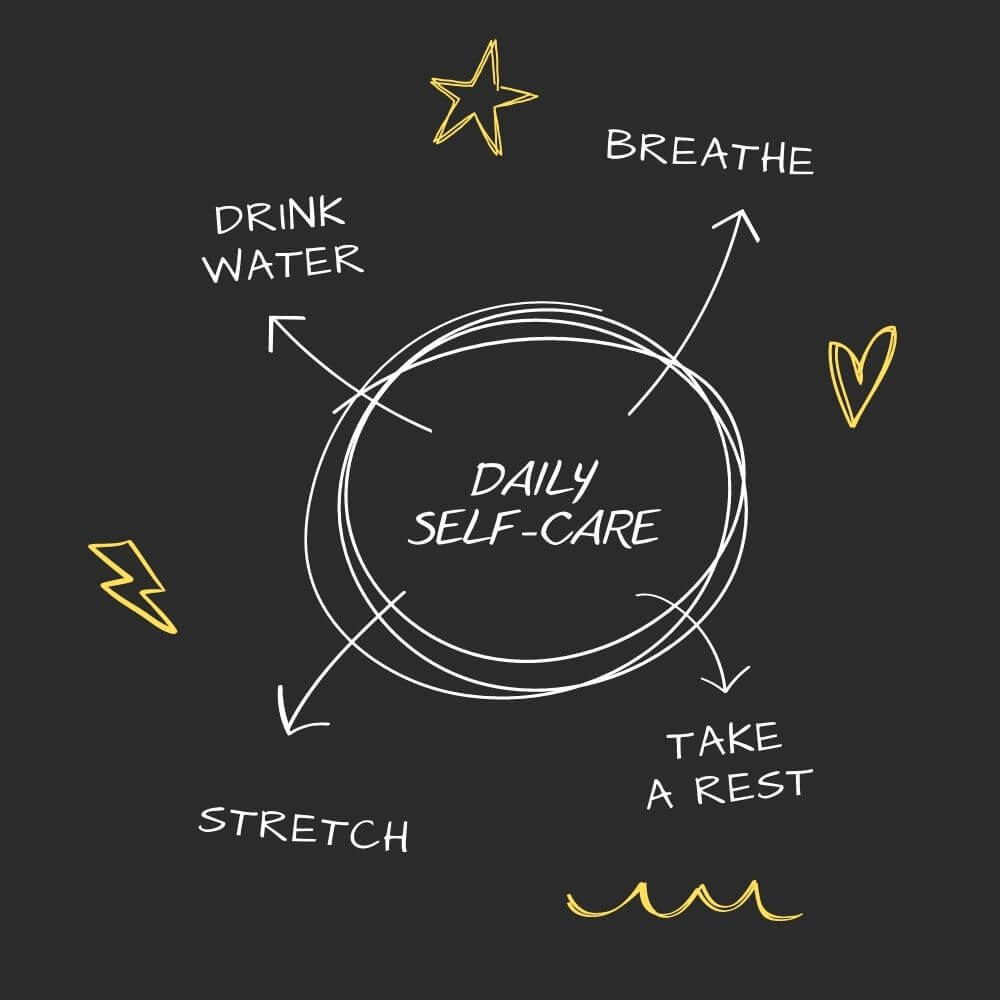
Exercises for Golfers Over 50
Treatment Options for Golf Elbow
Treatment focuses on relieving pain and inflammation while resting the injured tissue.
Options include:
- Ice and rest
- Anti-inflammatory medications
- Bracing and physical therapy
- Cortisone injections
- Surgery in severe cases
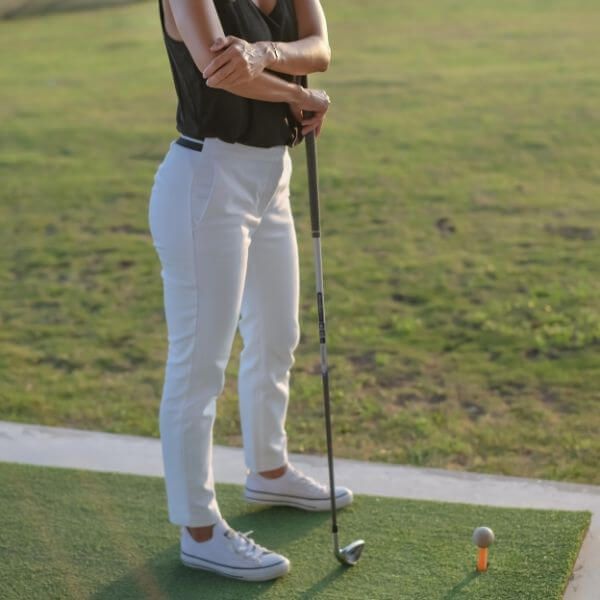
Prevention of Golf Elbow
- Warm up properly before golfing
- Strengthen forearm muscles
- Use proper golf swing mechanics
- Take breaks when golfing intensively
How Does Golf Elbow Affect Golfers?
Impacts on Game Performance
- Reduced ability to hit the ball cleanly and with control
- Loss of power and distance on shots
- Inconsistency in ball striking and accuracy
- Decline in skill level over time from inability to practice
- Frustration and lack of enjoyment from constant elbow pain
Considerations for Continuing to Play
- Play shorter rounds or take more breaks to rest your elbow
- Use elbow brace for support and swing restriction as needed
- Pop anti-inflammatory medication before play
- Work with a golf pro to adjust swing mechanics to protect the elbow
- Postpone playing until pain and inflammation subsides
- Ultimately, rest may be required for proper healing
More on Golf Elbow Symptoms and Effects on Golfers
The pain and reduced grip strength caused by golf elbow can make it difficult to swing a club properly. Symptoms often worsen after playing or practicing. Effects include:
- Pain and stiffness when swinging a club
- Difficulty gripping the club firmly
- Loss of control and distance on shots
- Inability to play or practice regularly
- Changing swing mechanics to compensate for pain
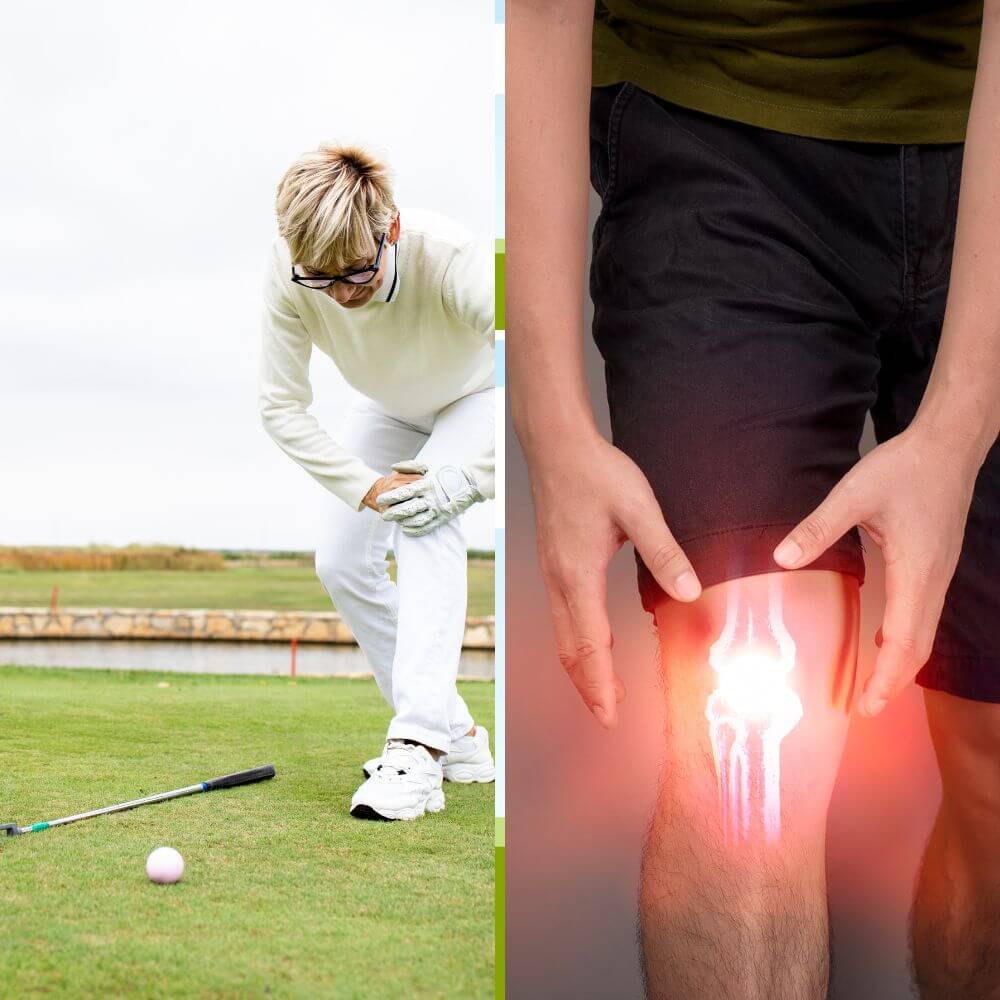
Golf Knee Brace
Golf Injury Prevention Tips
- Warm up wrists and arms before playing
- Build wrist and forearm strength
- Use a neutral, relaxed grip on the club
- Avoid overusing small muscle groups
- Play with clubs properly fitted for your swing
- Take regular rest breaks when practicing intensively
Conservative Treatment for Golf Elbow
Mild to moderate golf elbow can often be treated with conservative at-home remedies.
Rest and Ice Therapy
Taking a break from activities that aggravate your elbow along with ice therapy can help alleviate inflammation and pain.
Physical Therapy Exercises for Golf Elbow
Specific stretching and strengthening exercises from a physical therapist can aid recovery. They help restore flexibility and strength to the injured tissue.
Bracing and Supportive Devices
Braces, wraps, or straps can support the elbow joint and reduce stress on the tendons. These are often used in conjunction with other treatments.
Medical Treatment Options for Golf Elbow
Those with persistent, severe symptoms may need medical treatment from a doctor.
Medications for Golf Elbow Pain Relief
Over-the-counter or prescription anti-inflammatory medications can provide pain relief and reduce swelling.
Injections for Golf Elbow Treatment
Cortisone injections directly into the injured area can decrease inflammation and facilitate healing.
Surgery for Severe Cases of Golf Elbow
Surgery is rarely needed but may repair extensive tendon damage that fails to improve with other treatments.
Recovery and Rehabilitation from Golf Elbow
Proper rehabilitation is vital after treatment to rebuild strength and prevent re-injury.
Strengthening Exercises for Golf Elbow Rehabilitation
Gradually resuming exercises under the guidance of a physical therapist can help restore power and flexibility.
Here are some exercises that can help heal a golfer's elbow and prevent future issues:
- Wrist flexor stretch - Gently bend the wrist back with the arm extended to stretch flexor muscles. Hold for 30 seconds, repeat 2-3 times.
- Forearm pronator stretch - Place arm straight out with palm facing down. Use the other hand to gently pull fingers upwards. Hold for 30 seconds, repeat 2-3 times.
- Wrist extensor strengthening - Use an exercise band/lightweight to extend your wrist back, and slowly return to the start position. 2-3 sets of 10-15 reps.
- Eccentric wrist curls - Sit with an arm on the thigh, palm facing upwards. Use the other hand to lift the weight while slowly lowering down with the injured arm. 2-3 sets of 10-15 reps.
- Reverse wrist curls - Sit with an arm on the thigh, palm facing downwards. Slowly lift the weight by curling the wrist while keeping the forearm stationary. 2-3 sets of 10-15 reps.
- Tennis ball squeezes - Squeeze the tennis ball repeatedly in the palm to build grip strength. 2-3 sets of 10 squeezes.
- Wrist rotation - Hold weight in hand. Slowly rotate the wrist clockwise and counterclockwise. 2-3 sets of 10 reps in each direction.
- Elbow extension - Hold weight in hand with palm facing upwards, arm extended. Slowly bend the elbow to bring weight towards the shoulder, then reverse back to start. 2-3 sets of 10-15 reps.
Be sure to start slowly with light weight and gradually increase over time. Stretches can be done daily, with strengthening 2-3 times per week.
Pain Management Strategies for Golf Elbow
Methods like icing, bracing, medication, and activity modification can help manage residual pain.
Returning to Golf After Golf Elbow Recovery
Easing back into full golf swings under the advice of your doctor ensures you return as safely and effectively as possible.
With proper treatment, strengthening, and swing adjustments, most golfers can make a full recovery and get back to pain-free golfing after suffering from golf elbow. Consulting sports medicine specialists can help diagnose the condition accurately and tailor the ideal treatment plan.
FAQ - Golfers elbow pain
What is golf elbow pain?
Golf elbow pain, also known as medial epicondylitis, is a form of tendonitis that causes pain and inflammation in the inner side of your elbow.
How is golf elbow pain similar to tennis elbow?
Golf elbow pain is similar to tennis elbow in that both are forms of tendonitis that cause pain in the elbow. However, golf elbow pain specifically affects the inner side of the elbow, while tennis elbow affects the outside of the elbow.
What are the causes of golf elbow pain?
Golf elbow pain is usually caused by repetitive motion or overuse of the muscles and tendons in the forearm. It can be triggered by activities such as swinging a golf club, but it can also be caused by other daily activities or sports.
What are the symptoms and signs of golf elbow pain?
The symptoms of golf elbow pain include pain and swelling on the inner side of the elbow, as well as tenderness and weakness in the affected area. You may also experience pain that radiates down the forearm to the wrist and fingers.
How can golf elbow pain be treated?
Golf elbow pain can be treated with various methods. These include resting the affected area, applying ice packs to reduce pain and inflammation, using pain relievers, and performing strengthening and stretching exercises to improve flexibility and reduce symptoms. In more severe cases, medical intervention may be necessary.
Can golf elbow pain be prevented?
While it may not be possible to completely prevent golf elbow pain, there are steps you can take to reduce your risk. These include using proper technique and form when participating in activities that may strain the elbow, avoiding excessive repetitive motions, and warming up and stretching before physical activity.
When should I see a doctor for golf elbow pain?
If your symptoms of golf elbow pain persist or worsen despite home remedies and self-care measures, it is recommended to see a doctor. They can provide a proper diagnosis, recommend appropriate treatment options, and rule out any underlying conditions that may be causing your pain.
What are some other conditions that can cause elbow pain?
Other conditions that can cause elbow pain include tendonitis in other areas of the elbow, bursitis, arthritis, nerve compression, and fractures or dislocations. It is important to consult a healthcare professional for an accurate diagnosis.
Can golf elbow pain affect daily activities?
Yes, golf elbow pain can affect your ability to perform daily activities that involve the use of your forearm and elbow. Simple tasks such as lifting objects, gripping, and even typing can become painful and challenging. Proper treatment and rehabilitation can help alleviate these limitations.
Can golf elbow pain be treated with home remedies alone?
For mild cases of golf elbow pain, home remedies such as rest, ice packs, and over-the-counter pain relievers may be effective in reducing pain and inflammation. However, it is advisable to seek professional medical advice for a proper diagnosis and to ensure appropriate treatment and prevention measures are in place.
Thank you for visiting, and we hope to see you back soon!
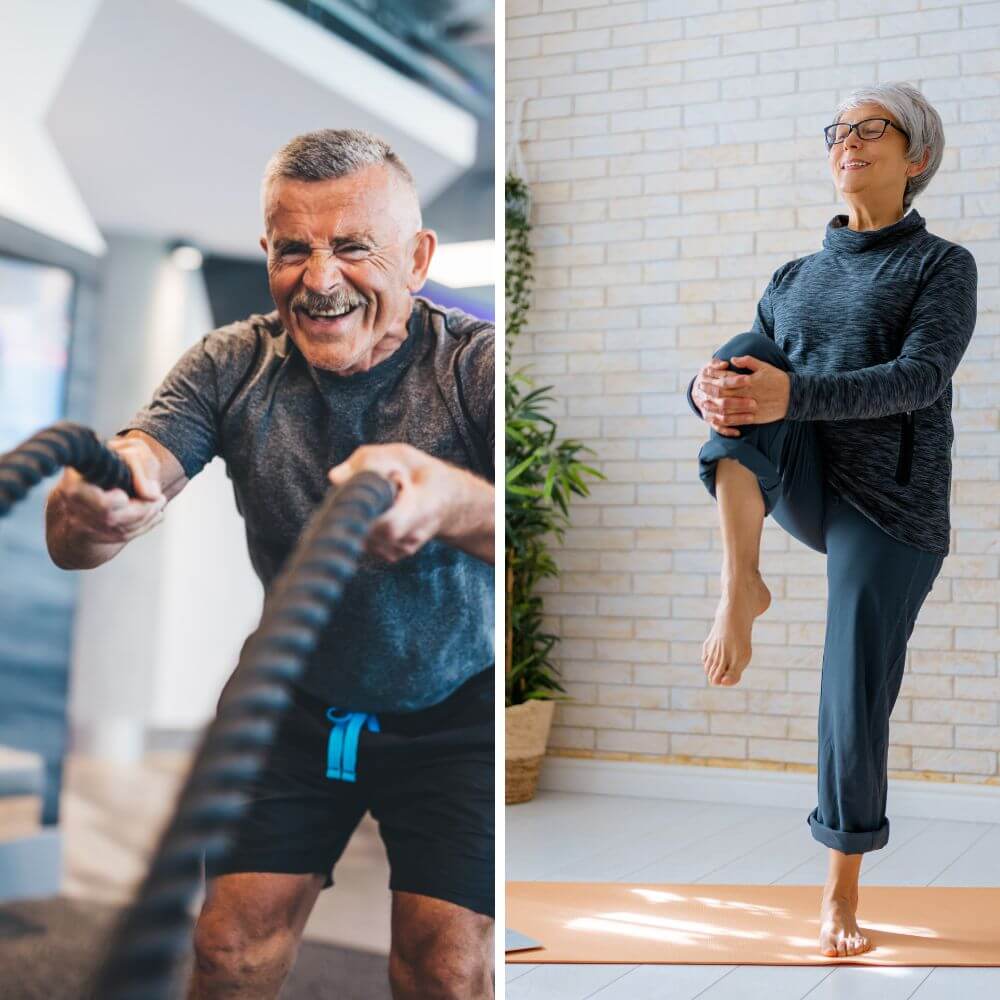
Exercises for Golfers Over 60
